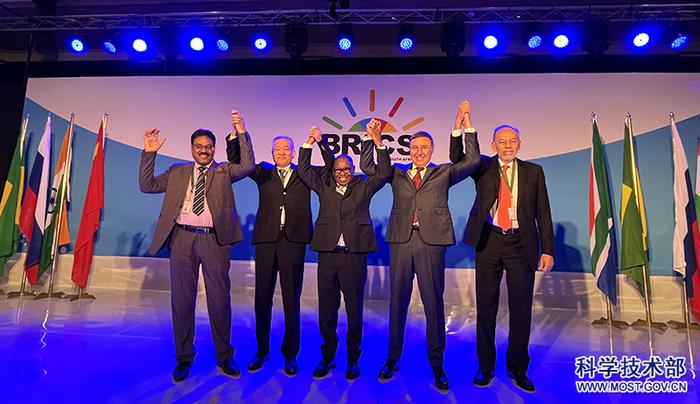
The 11th BRICS Science, Technology and Innovation (STI) Ministerial Meeting held in the city of Gqeberha, South Africa, on August 4, declared to strengthen the BRICS partnership in STI.?(PHOTO:?MINISTRY?OF?SCIENCE?AND?TECHNOLOGY)
By?FENG Zhiwen &?LIN?Yuchen
The 11th BRICS Science, Technology and Innovation (STI) Ministerial Meeting held in the city of Gqeberha, South Africa, on August 4, in the run-up to the 15th BRICS Summit from August 22 to 24, declared to strengthen the BRICS partnership in STI.
According to China's Minister of Science and Technology Wang Zhigang, China's innovative development cannot be separated from the world, and the world's scientific and technological progress needs China. He added that China has integrated itself into the global development network and achieved results in joint research with many countries, including the BRICS members, in such areas as climate change, food security and human health.
At present, China has sci-tech cooperation relations with 161 countries, regions and international organizations. It is also a member of more than 200 international organizations and multilateral mechanisms, participating in major international scientific programs and projects. They include the International Thermonuclear Experimental Reactor, the world's largest nuclear fusion research and engineering program, and the Square Kilometer Array Radio Telescope.
Wang said China has always regarded BRICS as a priority for cooperation in sci-tech innovation, and put forward a four-point initiative to deepen cooperation in sci-tech innovation, including strengthening the top-level design of cooperation in sci-tech innovation; accelerating the output and application of high-level scientific and technological achievements; promoting the benefits of science and technology for the betterment of society and people's livelihoods; and expanding the space for international exchanges and cooperation in science and technology.
Emmanuel Blade Nzimande, South Africa's Minister of Higher Education, Science and Technology, said his country has introduced a new 10-year science plan that puts STI at the core of its development. The three priorities are vaccine manufacturing, and developing the hydrogen economy and marine science, with deepening cooperation with other BRICS countries.
Large language model, "Huashan", specifically applied in the aerospace field for the first time, was launched at the 2024 China Satellite Application Conference.
